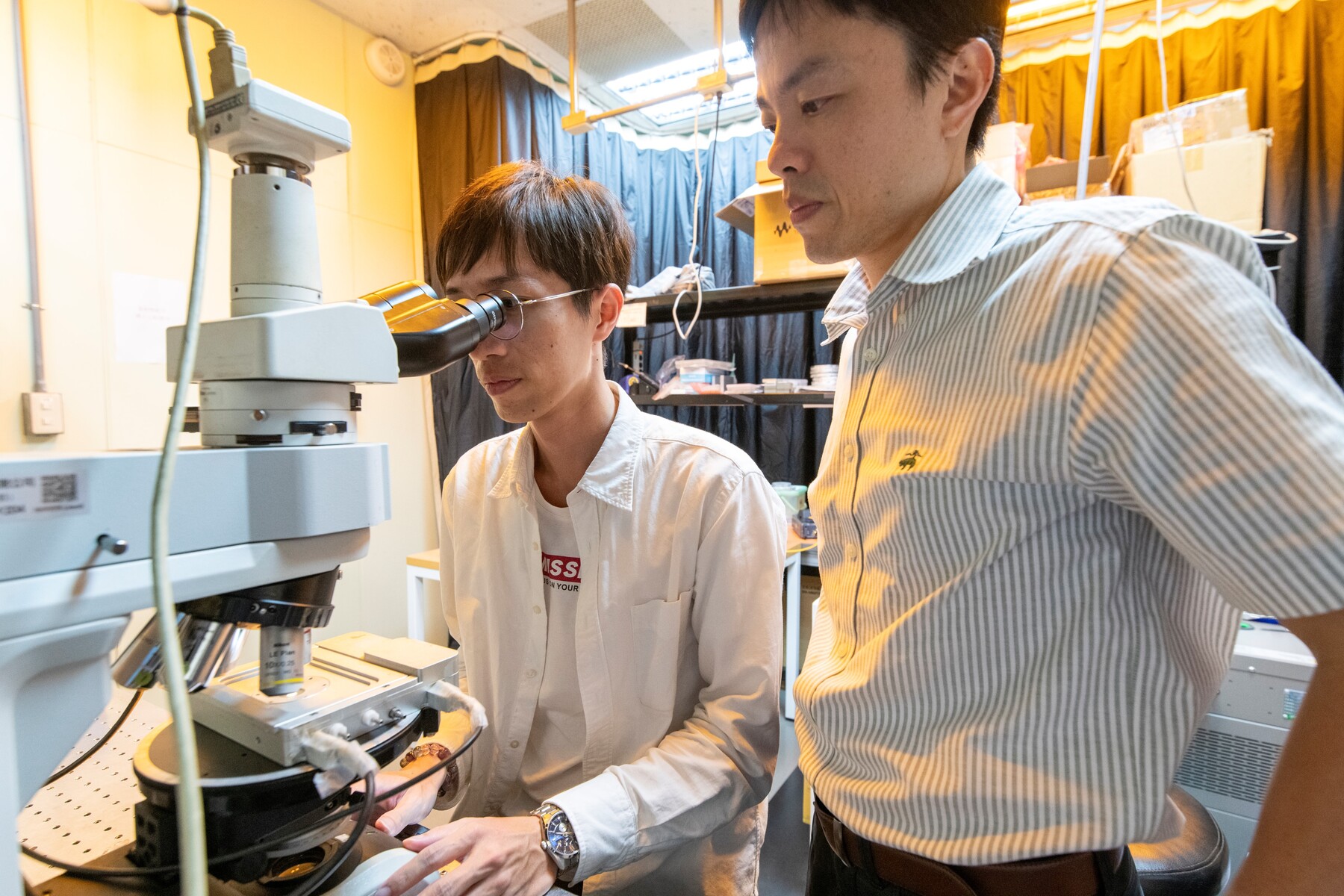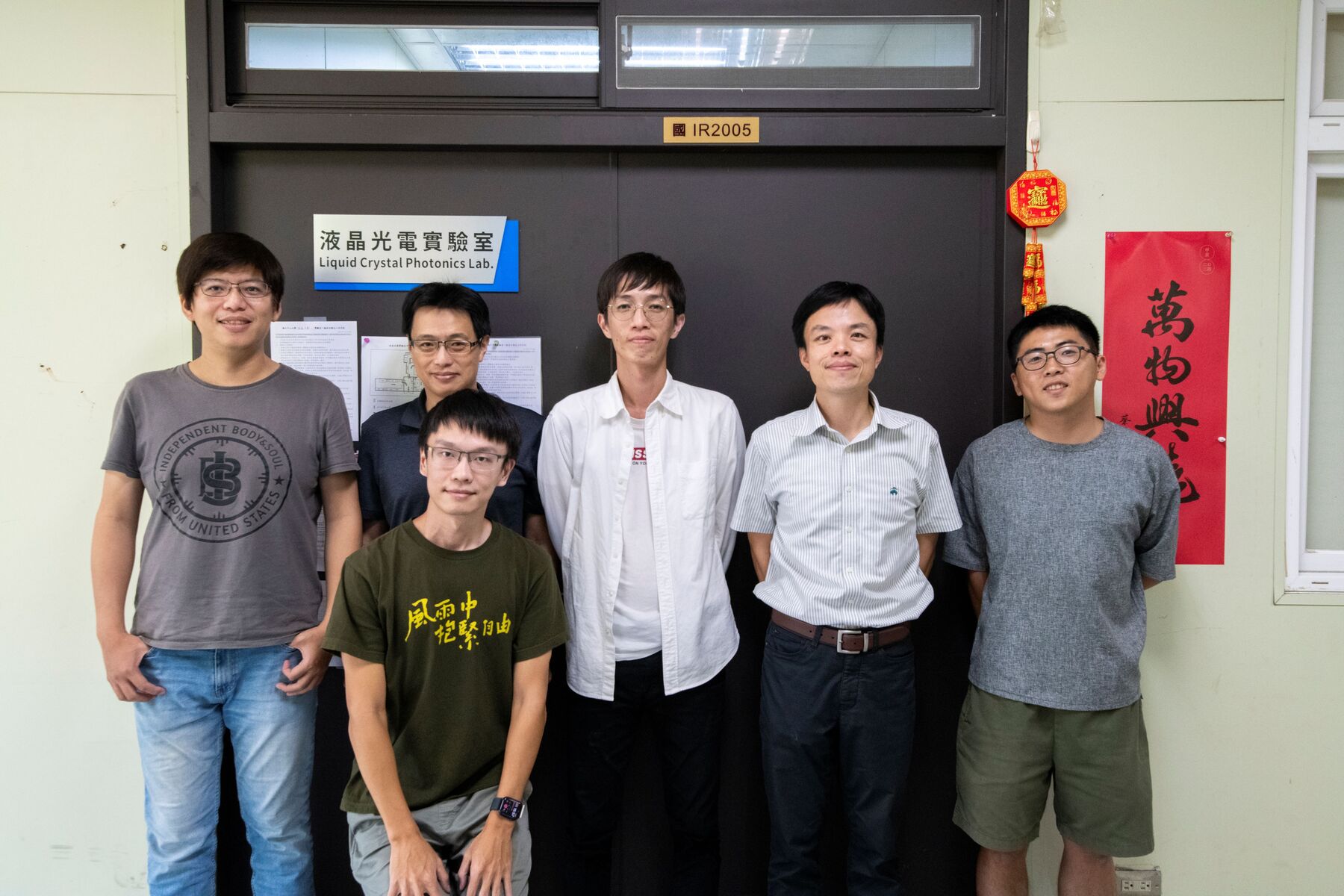Photon crystal liquid crystal growth accelerated by dozens of times: NSYSU leads international research on green optoelectronics




2025-01-07
Optoelectronic technology products are expected to become smaller, more efficient, and consume less energy! The research team led by Chair Professor and Vice President for Research and Development Tsung-Hsien Lin from the Department of Photonics at National Sun Yat-sen University (NSYSU) has developed an innovative "Reverse Electrostriction" technology. This breakthrough enables the production of large-area, highly stable blue-phase liquid crystals monocrystalline within minutes, significantly accelerating the traditional photonic crystal-growth process. This cutting-edge technology contributes to advancements in optoelectronic devices, sensors, and optical communication, promoting high-efficiency, low-energy-consumption, and environmentally friendly green optoelectronic technology. The research results were published in the internationally renowned journal Nature Communications and selected for the "Applied Physics and Mathematics" Editor's Focus webpage as one of the 50 most influential recent papers.
Blue-phase liquid crystals are unique soft materials with three-dimensional photonic crystal properties that reflect specific wavelengths of light, offering great potential for applications in electro-optic display technology, switches, sensors, biomedical imaging, and nonlinear optics, said Tsung-Hsien Lin. However, the traditional manufacturing process for blue-phase liquid crystals suffers from slow crystal growth rates and limited crystal sizes, restricting their applications. This groundbreaking study, led by NSYSU, brought together experts from various academic fields through cross-border collaborations between Taiwan and the United States. The team overcame these challenges, developing a novel technology capable of rapidly restructuring blue-phase liquid crystals and producing large-area, highly stable monocrystalline. This innovation reduces the growth time from several hours to just a few minutes, a speed improvement of dozens of times, breaking through the traditional bottlenecks of slow and limited-effect processes and expanding the potential applications of blue-phase liquid crystals.
The research team utilized the "Reverse Electrostriction" technique to uniformly align liquid crystal molecules by a strong electric field. Through precise control of the electric field design and temperature conditions, they successfully formed blue-phase liquid crystal monocrystalline with various symmetries (tetragonal, orthorhombic, and cubic) and lattice parameters within minutes. Leveraging a genetic algorithm, the team also analyzed unique monoclinic crystal structures in blue-phase liquid crystals. These diverse crystals remained stable after the electric field was removed and exhibited tunable symmetries, wide working band structures, and optical dispersion characteristics, offering blue-phase liquid crystals promising opportunities for advanced optical applications. Potential applications include the development of optical components such as filters and nonlinear laser modulators, biosensors and smart sensors for industrial automation, and technologies enhancing signal control in optical communication.
Tsung-Hsien Lin emphasized that the success of this breakthrough was made possible through the collaborative efforts of the NSYSU research team alongside international and interdisciplinary partners. Team members included postdoctoral researcher Chun-Wei Chen from Stanford University, Professor Iam Choon Khoo from Pennsylvania State University, and Dr. Timothy J. Bunning, Chief Technology Officer of the U.S. Air Force Research Laboratory. This research, recognized by the internationally renowned Nature Communications, not only enhances the manufacturing speed and quality of blue-phase liquid crystal materials but also opens new doors for advanced optoelectronic applications. Future optical and optoelectronic devices are expected to become smaller, more efficient, and energy-saving, driving forward green technology with significant societal and environmental impacts.
Journal link: https://www.nature.com/articles/s41467-024-51408-4
